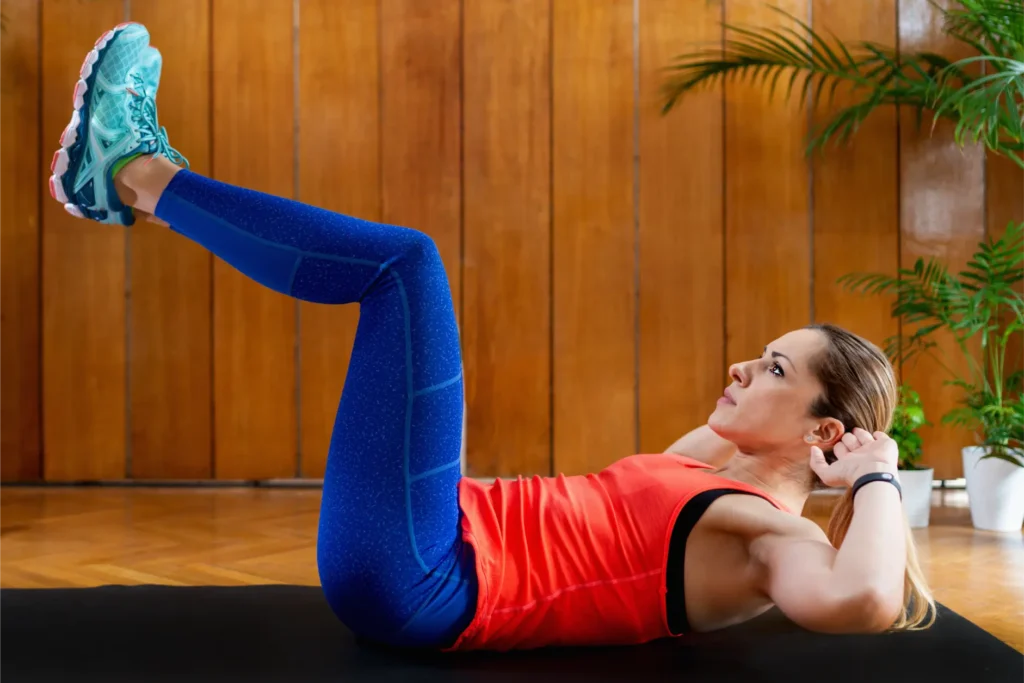Once a lie-sitting resp. “Sit-ups” were among the main exercises to strengthen the core of the body and get the dream bricks. Recently, however, they have been demonized from all sides, whether by physiotherapists or professional trainers. But are they really as bad as they are said to be? So, let’s clear up some facts and myths about this exercise.
As mentioned in the last section on CORE, the main role of the vast majority of these muscles is to stabilize the body (antiflexion, antiextension and antirotation) and transfer energy between the lower and upper body, creating a kinetic chain in the body. In simple terms, how strong your CORE is will be shown more by your body balance and posture, and not by how many “sit-ups” you do per minute. A strong core can significantly help in performing large, complex exercises with the right technique, and especially protects our back – and this is exactly what we expect from it. Thanks to the strong core of the body, we will relieve our waist, provide it with support and create a stable core around which the shoulder and hip joints can move.
So are classic “abs” bad?
Since this exercise is mainly focused on flexion (bending or bending forward) of the spine, it is often referred to as incorrect and wrong, because flexion (bending) of the spine can cause injuries. This is thanks to studies that have claimed that long-term and repeated flexion in the spine (several thousand repetitions) can cause damage to the intervertebral discs over time, and for this, “sit-ups” are not recommended to exercise. However, these studies were only carried out on a model of the spine (not human) and especially outside the body. The conclusion is that there is a possible connection, but human tissue can adapt to the load relatively quickly if we exercise responsibly and correctly. However, flexion in the spine is a movement like any other, and it also needs to be controlled.
Lie-sitting resp. So “sit-ups” have their certain advantages and I personally don’t see a problem in performing them, unless your training for the middle of the body consists only of this exercise. In many professional studies, no direct evidence has been found that “abs” are bad and dangerous. The problem is rather their poor technique or their incorrect implementation in training.
When could the exercise of “sit-ups” be bad?
People who have, for example, diastasis and problems with the spine, respectively. discs, I would not recommend them, but if a person does not have these problems and can control this exercise, he can include “sit-ups” in his training.
When performing them, you should also pay attention to what you do all day. If you sit incorrectly in the office with your back bent for hours a day and come to the gym after work and “load” yourself with 5 sets of 20-30 “sit-ups”, which will only deepen the position you are in all day, it probably won’t be the ideal exercise for you. Personally, I would only use it as a supplementary exercise within CORE training, because I think there are much better and safer methods to strengthen the core of the body. Imbalance between muscles CORE leads to pain in the lumbar and inefficient energy transfer, so doing “sit-ups” from morning to evening is certainly not the right way to do it.
The technique of the classic recumbent or resp. “belly”:
With the classic “sit-up”, we often see a lot of technical errors. The very first is the hands behind the head. At the beginning, I recommend placing them on your chest, stomach, or holding them in front of you – especially to relieve the cervical spine. Other defects are a displaced pelvis, in which the extensors of the spine are automatically active (the back “in the bridge”) and the toes are pressed against the bench/ladders. In the starting position on the ground, we should focus on the squat pelvis (we imagine that we want to roll the pelvis into the navel) and the back slightly pressed into the ground. The feet should be with the whole foot on the ground to alleviate the work of the adductors respectively. hip flexors. With this form, the exercise is more difficult than with the classic “pull-up” from the lower position, but it will exercise your core muscles much more and especially safely.
Conclusion:
The conclusion is that “abs” are neither good nor bad. It is very individual and always depends on the individual who performs them. In general, however, I would first focus on stabilization exercises that will help us get the body into the right position. These exercises are, for example, the already mentioned planks, farm walking with a kettlebell, deadbug or birddog. All of these exercises teach us exactly what we want – to move our limbs while maintaining a stable core. If you have these exercises under control and do not have any health problems, then you can include “sit-ups” in your workout.


